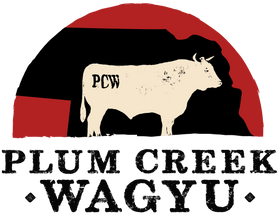The Growing Global Demand
The allure of Wagyu beef has transcended its Japanese origins, capturing the attention of food enthusiasts around the world. As a result, the demand for Wagyu beef has surged globally. This increased interest presents an opportunity for producers but also raises questions about how to scale production without compromising the quality that makes Wagyu so special.
Technological Innovations in Breeding and Production
Advancements in technology are poised to play a significant role in the future of Wagyu production. Genetic mapping and selective breeding techniques are being refined to enhance the quality of Wagyu cattle. By understanding the genetic markers associated with superior marbling and tenderness, breeders can more effectively produce cattle that meet the high standards of Wagyu beef.
Moreover, artificial intelligence (AI) and data analytics are being integrated into farming practices to monitor cattle health, optimize feeding regimens, and predict the best times for breeding. These innovations not only improve the efficiency of production but also ensure that the welfare of the animals remains a top priority.
The Role of Sustainable Practices
As the world becomes increasingly conscious of environmental impacts, sustainability is becoming a central focus in Wagyu production. Traditional Wagyu farming methods are often labor-intensive and resource-heavy, but modern techniques are helping to reduce the carbon footprint. For instance, some producers are adopting regenerative farming practices that improve soil health, enhance biodiversity, and reduce greenhouse gas emissions.
Preserving Tradition in a Modern World
Despite the push towards modernization, preserving the traditional aspects of Wagyu production is essential. The meticulous care and attention given to Wagyu cattle, such as specialized diets and stress-reducing practices, contribute to the unique quality of the meat. Maintaining these traditions, even as production scales, is crucial to ensuring that Wagyu beef retains its status as a luxury product.
Producers like Plum Creek Wagyu are at the forefront of balancing tradition with innovation. By adhering to time-honored practices while embracing new technologies, they are ensuring that the Wagyu experience remains unparalleled for future generations.
Related Posts
10 Quick and Easy Wagyu Beef Recipes for Busy Weeknights
From Ranch to Plate: Understanding the Wagyu Beef Supply Chain
Wagyu for Every Occasion: Perfect Cuts for Different Events
Sustainability in Wagyu Ranching: Our Commitment to the Environment
Pairing Wagyu with Local Nebraska Ingredients: A Farm-to-Table Experience
Nebraska is a state known for its rich agricultural heritage, offering a bountiful array of fresh produce, meats, and artisanal foods that reflect its commitment to high-quality, locally sourced ingredients. As a state deeply rooted in farming and ranching, it’s only natural that the exceptional Wagyu beef from Plum Creek Wagyu would pair perfectly with the best Nebraska has to offer.
In this post, we’ll explore how to combine the luxurious marbling of Wagyu with locally grown vegetables, grains, cheeses, and other unique ingredients to create a farm-to-table dining experience that celebrates both Nebraska’s culinary traditions and Wagyu's premium flavors.
A Beginner's Guide to Cooking Wagyu Beef at Home
Wagyu beef is a luxurious treat, known for its rich marbling, melt-in-your-mouth tenderness, and deep, savory flavor. Whether you’ve recently purchased your first Wagyu steak or you’re considering giving it a try, cooking this high-quality beef at home can be an exciting experience. In this beginner’s guide, we’ll offer simple recipes, helpful tips, and essential techniques to ensure you get the most out of your Wagyu beef purchase, making every meal a memorable occasion.








